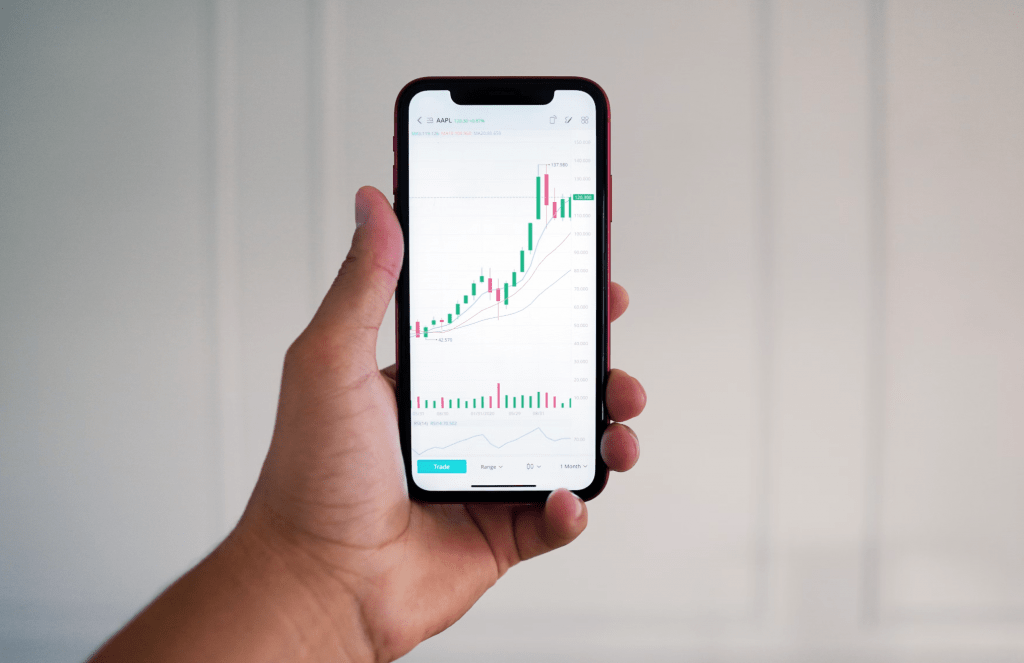Initially, the stock market was just a market of stocks. While you can still purchase individual stocks, today many investment products compete for your attention. These include mutual funds, exchange-traded fund (ETF) and index funds.
How can you choose the best investment option out of four popular options? Understanding the pros and cons and key differences of each investment product will help you decide what is best for you.
Stocks are tiny pieces of each company. Stocks are small pieces of individual companies. Mutual funds are a group of stocks. You get better diversification when you purchase a share of a mutual fund. Index funds follow an index, such as the S&P 500. ETFs work like mutual funds, except that they are traded just like stocks.
What Are Stocks?
Stocks are the shares of publicly-traded companies sold on stock exchanges. Over 3,500 companies are publicly traded, from household names such as Apple and Pepsi down to smaller companies you may have never heard of.
Stocks can be used in two ways to generate income. The stock’s price can increase. If you purchase a $100 stock and it increases to $120 you have earned 20% on your investment.
Dividends are another way stock investors can make money. Dividends are regular payments that a corporation will make to its stockholders. Dividends are usually paid out quarterly. Dividend-paying stocks are popular among investors because they provide a stream of passive income that is independent from the overall performance of a stock.
Pros Of Stocks
Investing in individual stocks has three major advantages.
Liquidity
Stocks are a liquid investment. Stocks are available for purchase or sale at any time, whether it’s during regular market hours or after-market hours. Mutual funds don’t allow you to do that.
Advanced Trading
Stocks offer advanced trading features that mutual funds don’t have, such as the ability to place stop-loss or trailing-loss order.
Stop-Loss Orders
Stop-loss orders are limit orders that only take effect if the stock price drops below a specific level.
If you purchase a stock for $100, then you can set a Stop-Loss Order at $95. The broker will execute the order immediately if the stock falls below $95. Stop-loss order are popular among investors because they reduce their risk.

They can only be executed during the regular market hours. Stocks can drop precipitously in the pre-market hours. By the time the stock market opens, it could be significantly below the stop-loss. It’s vital to note that stop-loss order don’t completely eliminate risk.
The Trailing Stop
A trailing order is an advanced stop loss order. Instead of setting a price limit for your stop-loss, you can use a percentage. As an example, 5% could be set as your trailing stops. If you do this, your sell order will be executed whenever your stock falls 5% below its most recent high.
It is more effective to limit your risk by using trailing stops. Here’s why. Imagine you bought a $100 stock and set your stop loss at $95. This would result in a loss of about 5%. It sounds pretty good.
Imagine that your stock reaches $150. If your stock fell to $95, it would be a drop of over 35%. Stop-loss orders have this inherent flaw. As your stock increases, so does the risk.
If you had a trailing stop of 5% on your stock it would have executed an order when the stock fell to $142.50. (a 5% decrease from $150). The best thing about trailing stops is that they allow you to grow your business at a rate of unlimited potential while limiting the risk. Personal, I will never purchase a stock without immediately placing a trailing order.
Annual Cost
Stocks are a low-cost investment. Stocks are low-cost investments.
After you purchase the stock, the expenses are almost over.
Tax-Efficiency
Stocks can also be a tax efficient investment vehicle. Stocks are not taxed on capital gains until you sell them.
Stocks: Cons and Negatives
So, those are the positives of stocks. They also have a few pretty serious downsides. We’ll take a closer look.
Risk
Stocks are by far the most risky of the four options we will be comparing. The performance of a single company can make or break your investing success.
Your portfolio will also tank if that company fails. Stock investing is a risky investment because of its lack of diversification.
You could certainly buy several different stocks for diversification. It can be difficult to keep track of the performance of 10 or more stocks.
You’d still be able to invest in a mutual fund that is far less diverse than the average.
Trading Commissions and Fees
Brokerages have traditionally charged investors a fee for trading stocks, but allowed them to trade their own mutual funds free of charge.
Trading fees can be as low as $5. For those who don’t trade often, it isn’t a huge deal. If you make trades more than once a month, your fees can add up and reduce your return.

The events of the past year have reduced the likelihood of this being a disadvantage. Multiple brokers have eliminated their stock trading charges, causing a major shift in the investing industry.
Schwab, TD Ameritrade Fidelity, and Robinhood offer free trades. It’s only a question of time until more brokers join in.
What are Mutual Funds?
Remember when we said that the main problem with individual stocks was their lack of diversification.
Mutual funds are a solution to this problem. When you purchase a share in a mutual fund you are actually purchasing small pieces of hundreds of individual securities.
Mutual funds are less volatile than stocks, which can have huge ups and downs. If you are a conservative investor and want to avoid volatility in the market, mutual funds may be an excellent choice.
Pros Of Mutual Funds
Mutual funds offer a number of benefits in addition to their automatic diversification.

Asset Allocation
Mutual funds can be tailored to suit your individual risk profile. Mutual funds are divided into five main categories.
Stocks that have a higher-than-average potential for growth
Dividends and Growth Stocks – This category includes both dividend paying and growth stocks
Stocks that are undervalued are considered to be value stocks
Balanced Fund – includes both stocks and bonds
Target-Date funds – this type of fund’s portfolio changes over time to become more conservative
Asset allocation is the main difference between these mutual fund categories. You can find a mutual funds that fits your goals and investing profile.
Professional Oversight
Mutual funds can also offer professional fund managers. If you are new to investing, this might give you a sense of security and comfort. But it will also increase your fees.
Dollar-Cost Averaging
Most mutual funds also allow you to purchase “fractional shares”. This can make it much easier to invest a specific amount of money on a regular basis.
Let’s say, for example, that a mutual fund and a stock are both priced at $75. You want to invest $100. You could only buy one stock share with the money you had left. With the mutual fund you can typically buy up to 1.33 shares.
It’s nice to be able buy fractional shares because it allows you to put your investment on autopilot. Most brokers allow you to set up an automatic monthly transaction at any dollar amount.
If you want to invest $150 every month into a mutual fund you can. By doing this, you would be taking advantage dollar-cost averaging. When the mutual fund falls, $150 will buy you more shares. When the mutual fund increases, your $150 will buy fewer shares.
Cons Of Mutual Funds
Mutual funds are a great investment. Mutual funds are not perfect. You should be aware of two negative aspects.
Cost
The cost of mutual funds is one of their biggest drawbacks. All mutual funds have expense ratios. The expense ratios of actively managed mutual fund can be very expensive. They often range from 0.50 to 1.5 percent.
Mutual funds can also have upfront sales charges of up to 8.5% of the invested amount! You’d start out 8.5 % behind. To put it another way, your mutual fund would need to grow by 8.5 % to even break even.
Most mutual funds do not have such high sales loads. Many mutual funds have loads of between 3% and 5%. That’s, in my view, a terrible thing.
Liquidity
Mutual funds are not as liquid as stock. You can’t buy or sell mutual funds at the stock exchange during open hours. Mutual funds are traded once per day, after the stock market closes.
Mutual funds are not the same. You can sell a stock that is falling before it falls too far. Even if your sell order is placed at 10am, the fund will not trade until the close of the trading day.

Accessibility
Mutual funds have minimum investment requirements of at least $1,000. Stocks, however, only require that you have enough money for one share. Stocks (or ETFs), on the other hand, may be more suitable if you do not have much money to invest.
What are index funds?
Let’s first clarify what an Index is. Simply put, an index tracks a group’s stock price that shares some features. The S&P 500, for example tracks the market cap (the price of the stock multiplied by the number of public shares) of the 500 biggest US companies. The index will rise if the stock prices of these companies go up as a whole. The index will fall if the average price of stocks drops.
You cannot invest directly in a stock index. This is not a real investment, but information that’s gathered and tracked. You can, however, invest in index funds. Index funds are a type mutual fund which tries to mimic an index as closely and accurately as possible. The fund will own the same stocks as the index.
S&P 500 index fund is one of the most popular index funds, but many others track other types of market indices.
Other examples include:
- Total Stock Market Index Funds
- Russell 2000 Index Fund
- Bond Index Funds
- Gold and Silver Index Funds
There are many more. Index funds are passive investments because they’re not actively managed by fund managers.













+ There are no comments
Add yours